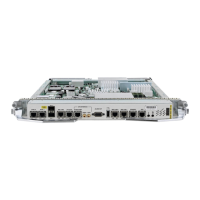If the neighbor is configured as an external BGP (eBGP) peer, you must configure an inbound and outbound
route policy on the neighbor using the route-policy command.
Note
SUMMARY STEPS
1.
configure
2.
route-policy route-policy-name
3.
end-policy
4.
commit
5.
configure
6.
router bgp as-number
7.
bgp router-id ip-address
8.
address-family { ipv4 | ipv6 } unicast
9.
exit
10.
neighbor ip-address
11.
remote-as as-number
12.
address-family { ipv4 | ipv6 } unicast
13.
route-policy route-policy-name { in | out }
14.
commit
DETAILED STEPS
PurposeCommand or Action
configure
Step 1
(Optional) Creates a route policy and enters route policy
configuration mode, where you can define the route
policy.
route-policy route-policy-name
Example:
RP/0/RSP0/CPU0:router(config)# route-policy
Step 2
drop-as-1234
RP/0/RSP0/CPU0:router(config-rpl)# if as-path
passes-through '1234' then
RP/0/RSP0/CPU0:router(config-rpl)# apply
check-communities
RP/0/RSP0/CPU0:router(config-rpl)# else
RP/0/RSP0/CPU0:router(config-rpl)# pass
RP/0/RSP0/CPU0:router(config-rpl)# endif
(Optional) Ends the definition of a route policy and exits
route policy configuration mode.
end-policy
Example:
RP/0/RSP0/CPU0:router(config-rpl)# end-policy
Step 3
commit
Step 4
configure
Step 5
Cisco ASR 9000 Series Aggregation Services Router Routing Configuration Guide, Release 5.1.x
76 OL-30423-03
Implementing BGP
Enabling BGP Routing

